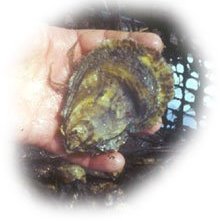Now that the Food and Drug Administration (FDA) and the Environmental Protection Agency (EPA) have issued new advice for pregnant and nursing women about fish consumption, the U.S. Tuna Foundation (USTF) today launched a national advertising campaign designed to explain the government’s specific recommendations regarding eating canned tuna.
Coming at a time of extensive public confusion regarding what the government’s new seafood advisory really means, USTF has started taking out ads in major newspapers that tell pregnant and nursing women “FDA and EPA encourage women and young children to eat a variety of fish, including canned tuna.” Specifically, the ads relay these important recommendations contained in the new FDA and EPA advisory:
There are five commonly eaten fish with very low mercury levels: shrimp, salmon, pollock, catfish and canned light tuna;
Pregnant women should eat up to 12 ounces a week of a variety of fish containing low levels of mercury, such as canned tuna;
At the same time, pregnant and nursing women can safely eat up to 6 ounces a week of canned albacore tuna. In general, there are up to 2 ounces of albacore in a typical serving;
Pregnant and nursing women and young children should avoid shark, swordfish, tilefish and king mackerel because these types of fish have higher levels of mercury; and
Outside of pregnant and nursing women and young children, Americans are encouraged to increase their consumption of fish, including canned tuna.
“What the government’s new seafood advisory makes very clear is that pregnant and nursing women and young children should continue to eat fish and that canned tuna is a safe and healthy choice,” said Lillian Beard, M.D., an Associate Clinical Professor at the George Washington University School of Medicine and Health Sciences in Washington, D.C and a member of the Tuna Nutrition Council which advises USTF on nutrition and public health matters. “All Americans will benefit from understanding this new information.”
USTF’s ad campaign also tackles some of the “what ifs” about mercury levels in canned tuna, explaining, “no government study has ever found unsafe levels of mercury in women or children who eat canned tuna.” Here, USTF reported the findings of a major study conducted by the Centers for Disease Control and Prevention (CDC), which analyzed the mercury levels in the blood of a random sample of American women and children and found that every one of the women and children studied -- 100 percent – had mercury levels that were significantly below the threshold for any known risk.
“Nearly all fish contain trace amounts of mercury but in most cases, the levels are very low and not harmful to humans,” said Jeanne P. Goldberg, Ph.D., RD, Director of the Center for Nutrition Communication at Tufts University and a member of the Tuna Nutrition Council. “To get this point across to the American public requires engaging in a dialogue with consumers, which is what these ads are designed to do.”
Because recent reporting about the new FDA and EPA seafood advice has stressed the negatives about fish consumption, USTF’s ads are designed to help women understand the positives of consuming canned tuna and other types of fish during pregnancy and lactation. Accordingly, the ads state, “the omega-3 fatty acids found in canned tuna are considered ‘wonder nutrients’ for pregnant and nursing women.” Of key significance, the ads explain the role of DHA (docosahexaenoic acid), a specific fatty acid, which is essential during pregnancy and the first two years of a baby’s life for the development of the brain and the nerves of the infant’s eyes.
According to scientific studies, DHA comprises approximately 40 percent of the polyunsaturated fatty acid content in the cell membranes in the brain and 60 percent of the cell membranes in the retina and is transferred from mother to the fetus at a high rate during the last trimester of pregnancy. The ads also point out that with the exception of salmon, canned albacore tuna contains more DHA than any other commonly eaten seafood.
“It is important for pregnant and nursing women to understand that the omega-3 fatty acids found in fish are essential during pregnancy and lactation,” said Joyce Nettleton, D.Sc., R.D., author of Omega-3 Fatty Acids and Health and another member of the Tuna Nutrition Council. “Women need to know that eating canned tuna and many other types of fish during pregnancy provides the omega-3 fatty acids that are necessary for the brain of the fetus to develop and thrive.”
To drive home these important facts, USTF will be using multiple information channels, including print advertising and new information on its Web site – www.tunafacts.com. The first newspaper ad aired last week in the Washington Post followed by placements today in USA Today, the New York Times and the San Diego Union Tribune. USTF will also be placing ads in special publications read by pregnant women and will be working with a number of medical and women’s health groups to translate the new FDA/EPA advice into consumer materials and patient brochures.
Established in 1976, the U.S. Tuna Foundation (USTF) is the national organization representing the canned tuna processors and the fishermen who supply them and addresses issues ranging from fishing access arrangements to federal and state regulations and domestic marketing.











